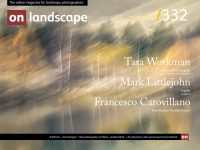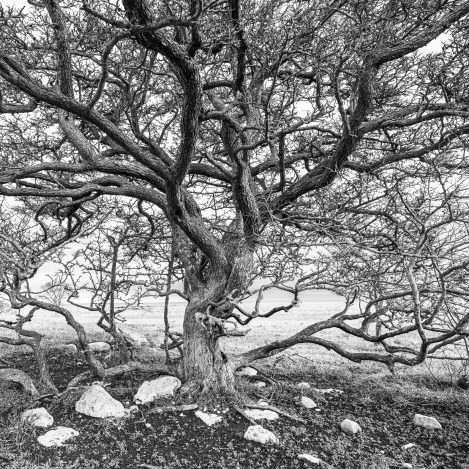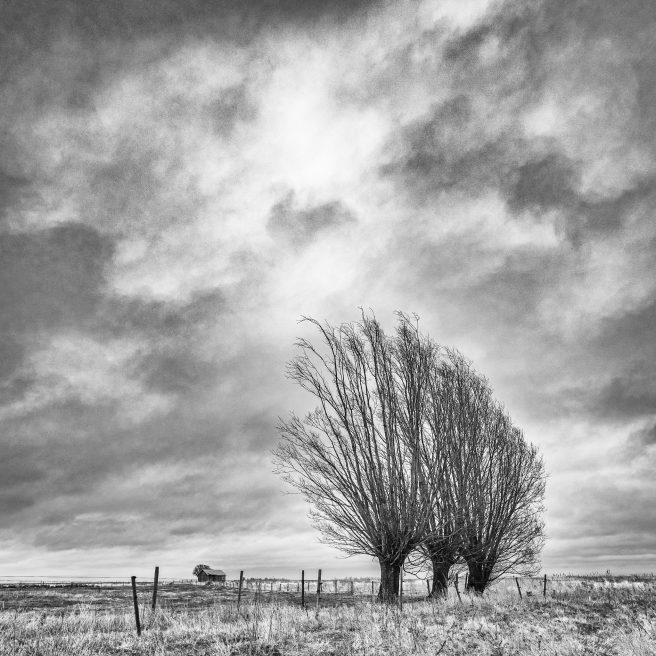The Swedish Island in the Baltic Sea

Andreas Brink
I'm a self-taught photographer and started taking pictures at young age with an analogue film camera which later has been replaced by a full frame digital camera. I like great landscapes, but also to capture details, shapes and forms in the landscape. Beside photography I work with images on a daily basis, even if of a special kind. I'm a Geographer working with satellite images. Living in Italy I consider myself a true citizen of the world (or at least Europe), since I'm of German origins, born in Italy and married to a Swede.
Carl Linnaeus, Swedish biologist and physician known for being the "father of modern taxonomy", noted on his Öland expedition in 1741: “Öland is different - as soon as we have touched the beach, we noticed that this was totally different from the other Swedish provinces. The wide, flat and open landscape stretches to the distant horizon, which is marked by the Baltic Sea.”
Öland, which is my second home (the first one being Italy), is a narrow and long island joined to the city of Kalmar on the mainland by Europe's once longest bridge. The name Öland translates as “Island Land”, Ö being the Swedish word for island.
Around 26,000 people live there permanently. However, during summer months, the population multiplies drastically, with Swedish and foreign tourists descending on this summer destination.
Most of Öland's landmarks go back in history hundreds and thousands of years. The island contains several Viking burial grounds, and there are several primitive stone‐walled forts, the most noteworthy of which is Graborg in the middle of the island.
The northernmost tip of the island is characterised by the so called “Trollskogen”, the Enchanted Forest, a stand of pine woods, crossed by series of paths leading to white beaches, wild flowers and picnic clearings, but so far I haven’t seen any trolls…
The central part of Öland is home to the “Mittlandsskogen”, Europe's largest contiguous deciduous forest area below the mountain range and here is also Sweden's largest hazel forest.
However, my preferred photographic environment is located in the agricultural landscape of southern Öland, which is a living mixture of fields, characteristic linear villages, pastures and coastal areas. The area has a history of several thousand years. In fact, the ancestors of today´s farmers have made southern Öland to the UNESCO World Heritage Site it is today.
Probably the most typical agrarian monuments are the characteristic stone walls. The many kilometers of stone walls connect the history of several centuries. For more than 2000 years, the islanders have built stone walls into fences. It was not until after the middle of the 20th century that knowledge of the art of laying walls began to decline. With the walls disappearing, both a piece of Öland's history and part of the plant and animal life are at risk of vanishing.
Part of this southern landscape is the limestone steppe called “Stora Alvaret” (Great Alvar), a treeless plateau that is unique in Scandinavia. The plateau produces plant life uncharacteristic of Scandinavia. In spring, many different species of orchids bloom there, including “Ölandssolvända”, which has not been found anywhere else in the world.
The coastlands and coastal meadows still have today a unique continuity of use. For thousands of years, they have been used for or as haymaking, as is clearly reflected in both flora and fauna. The coastlands include several highly distinctive plant communities and are an important habitat for a great number of rare and vulnerable bird species. Often round shaped boulders and rocks shaped by past glacial times can be found in this open landscapes offering interesting photographic opportunities.
Finally, reaching Ottenby at the most southern tip of the island, the visitor may be surprised by a savannah type of landscape, with open grasslands and very sparse trees which sometimes remind the shape of the typical African Umbrella tree. In particular, this area is home to a large number of birds, and likewise, birdwatchers wandering around the various bird sanctuaries and the museum dedicated to birds and their migration.
For far more than a hundred years, researchers, artists, authors, bird watchers and other nature lovers have been attracted to Öland by the light, the unique nature and the richness of the birds. In a similar way, it is here where I have discovered my true photographic style. Inspired by this somehow minimalistic atmosphere, I try to capture the essential elements in the landscape and to communicate this great sense of peace and quietness through my images. Öland is a place for slow photography, almost meditative photography; it’s about space and time. It is here that I live my photography.
An old hymn still sung in the villages of the island records, “This is the fair land of summer, the island of wind and sun. . . .”
My Favourites
Snowstorm
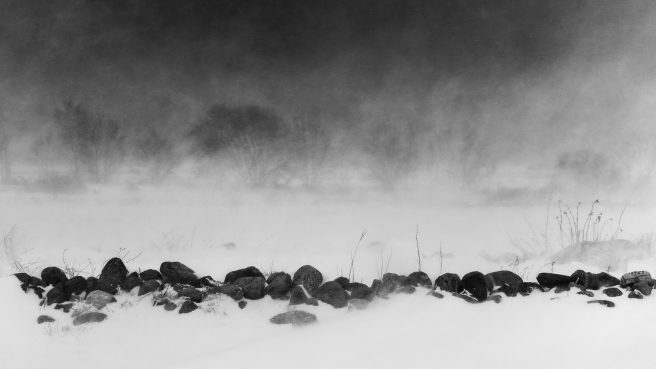
Ölandsfåk is the characteristic snowstorm on the island of Öland in Sweden. The wind blows so strong that it seems to snow horizontally. Huge drifts of hard-packed snow form in wind shielded areas while the ground can be almost bare out in fields. There are many old stories about people who got lost and froze to death in this weather. I took this picture from a safe distance from my house. This is one of my favourite winterscape pictures I took on the island. I like the contrast between the typical stone wall in the foreground and the painting like background of the trees in the snowstorm. It has a dramatic atmosphere, but at the same time, it transmits a sense of peace and quietness.
Savanna
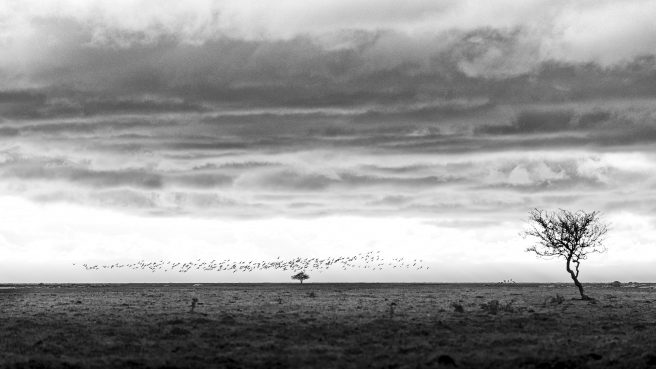
Öland’s savannah is the title of this image. Indeed, the southern tip of the island reminds one of the typical landscapes of Africa, with its open grasslands and sparse trees. This picture summarises three elements of the island which formed my photographic style; the big and often dramatic skies, minimalistic landscapes and birds (even if I’m not a particular bird photographer). It is somehow a meditative image.
Stoneway
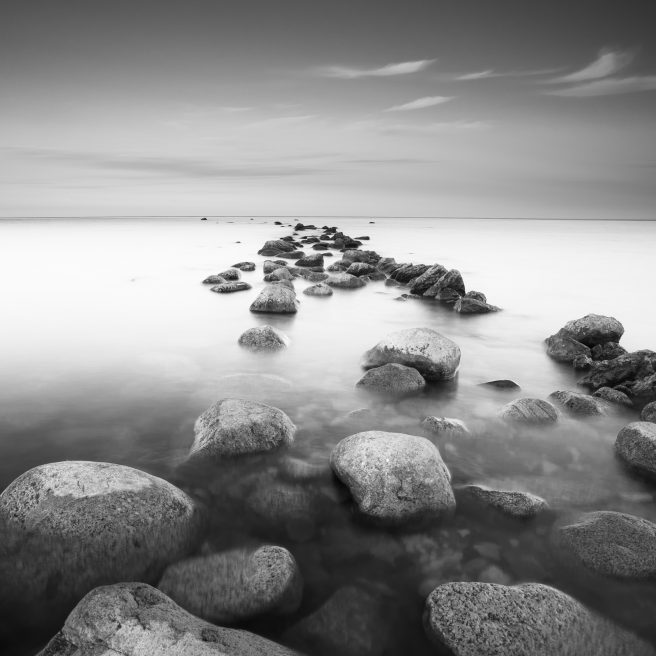
The island of Öland is about slow photography. I really like to slow down and almost absorb the landscape before taking a picture. This image is an expression of this feeling. I entitled it “Stoneway to Heaven” due to the almost endless line of rocks which seem to touch the horizon. Also, often my image titles make reference to songs or compositions since music is another important part of my life, I both love listening to music and playing it myself.

